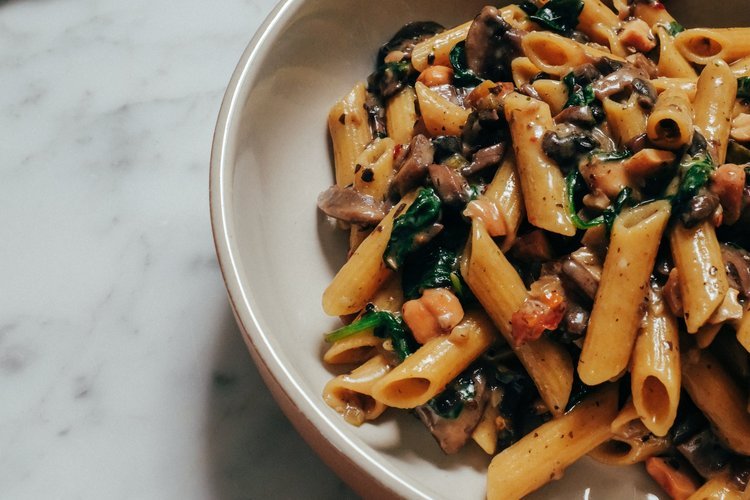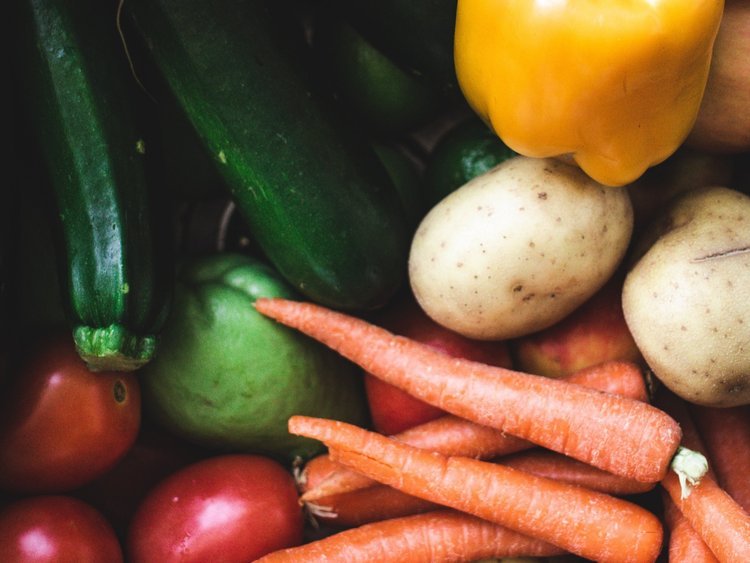It is January! A new start to a new year and an opportunity to do something amazing for your health, for animals and for the planet! Of course, we are talking about Veganuary, the challenge to try a plant-based diet for a whole month.
In 2022, the Veganuary movement inspired and supported 620000 people across the world to try vegan eating. A massive 98% of people who did Veganuary last year would recommend it!
Making such a big change to the way you eat can seem daunting so we’ve put together our tips for doing Veganuary.
1. “Veganise” your favourite recipes
There are thousands of vegan recipes to explore (more about those later), but substituting vegan products for meat and dairy ingredients in your favourite recipes is a great way to get started and can make the switch to vegan easier.
There are now loads of excellent plant-based protein sources available from supermarkets and health-food shops. We like switching out beef for plant-based mince in spaghetti bolognaise, chilli con carne and tacos. Add dairy free cheese on top. Switch the chicken for fake chicken in curries or fajitas. Try vegan kebab ‘meat’. Or be even healthier and choose vegetables, lentils, jackfruit, banana blossom or tofu.
2. Fake meats, cheese and vegan milk substitutes
There is now a vast choice of vegan substitutes in supermarkets, restaurants and cafes. Some are new but don’t forget lentils and beans!
Why not try some of these:
Soy Protein
Tempeh
Tofu
Jackfruit
Pea protein
Mycoprotein like Quorn
Lentils
Seitan
Beans
Visit https://cleangreensimple.com/article/best-vegan-meat-substitutes/ for more info about them.
You can get a variety of cheeses like; mozzarella, cheddar, feta, great style, hallumoi. Flavoured cheeses like:; smoked, cranberry, onion, chives or spicy. There is also spreadable cheese, squeezy cheese, cheese sauce and cheese flakes which are called engevita.
There is a variety of milk like oat, almond, rice, soya, coconut, hemp, pea, potato, and cashew milk.
You can also get squirty cream, double cream, condensed milk, yoghurts, ice cream even honey substitutes like agave nectar.
3. Discover vegan recipes
It has never been easier to find vegan recipes. There are some great books on vegan eating and a vast number of vegan recipes online. Searching the internet for recipes is a quick and easy way to find ideas and get inspired.
If you like to watch cooking videos, try YouTube, follow people making vegan food on Instagram, or tic tok, and save the recipes for free.
Add recipes you find online to your online bookmark to help you find and organise your favourite recipes.
Here are some links to get you started;
Sign up to Veganuary you get recipes emailed to you:
BBC food have got 87 easy vegan recipes on their blog:
https://www.bbcgoodfood.com/recipes/collection/easy-vegan-recipes/amp
Love and lemons 85 vegan recipes:
https://www.loveandlemons.com/vegan-recipes/
70 vegan recipes from good house keeping:
https://www.goodhousekeeping.com/food-recipes/healthy/g807/vegan-recipes/
4. Make your own substitutes
If you’re feeling adventurous and want to save some money, you can make your own meat substitutes. Have fun and adapt the flavours to suit your own tastes!
For vegan meat recipes:
https://chooseveg.com/blog/10-badass-recipes-for-making-your-own-vegan/
For vegan milks like oat milk, rice or coconut milk:
To make homemade flavoured cheeses from cashews and cheese sauces:
https://www.veganfoodandliving.com/vegan-recipes/23-best-ever-vegan-cheese-recipes/
5. Shopping for Vegan Food
Now you have checked out your favourite recipes you can write a list of essentials you need to cook.
Starting out vegan shopping can be confusing but the supermarkets make it very simple to purchase vegan products and there is a great range during veganuary. There are usually sections in supermarkets for vegan food in the chilled fridges, dry cupboard essentials and frozen aisles of the supermarket. Most vegan food is clearly marked as ‘plant-based’ or ‘vegan’.
It is possible to get caught out if the product you’re buying doesn’t clearly say it’s plant-based or vegan so do make sure you check the ingredients on the labels when shopping. Check the list of ingredients to make sure there aren’t any allergens in bold that say “Milk” or “Egg”.
Here is a list of foods and ingredients to avoid on a vegan diet:
https://www.veganfoodandliving.com/features/food-ingredients-avoid-vegan-diet/
6. Tips for eating out
Do your research. Checking the menu out online relieves the anxiety of not knowing if you can eat there and can save you a wasted trip (and hanger!). Most restaurants state clearly on their menus what items are vegan or what can be made vegan. If they don’t you can always ring the restaurant to ask and see if they can amend some dishes for you.
You can now order Vegan milk substitutes in cafes, with vegan cakes. There are Vegan options in fast food and restaurants. Vegan wines and beers in bars and restaurants are usually labelled vegan on menus. So there are lots of places for a vegan to eat out and be social!
7. Food supplements
It’s a good idea to take a range of supplements in general to support your health. Vitamins like b12, omega 3, multivitamins are great to take all the time and in Britain and other northern areas, we also need vitamin D. These supplements help keep a balanced diet and help you get the nutrients you need.
Here is a great link for information on vegan nutrition:
https://www.greenqueen.com.hk/6-vitamins-vegans-supplements-whole-foods-plant-based-diet/
Get healthy bacteria in your diet by taking acidophilus probiotics or live vegan yoghurt and fermented foods like sauerkraut, kombucha, and tofu.
8. Protein and healthy fats
Make sure you are eating enough protein. Most grains and legumes are full of protein &fake meats are a good source. Make sure with every meal you get some healthy fats and protein like nuts or nut spread or tofu or tempeh on a salad or Buddha bowl.
Below is a link to healthy vegan fats and proteins, also some high protein recipes:
8. Enjoy and share your journey
Don’t take Veganuary too seriously and don’t get disheartened if you make any mistakes; it’s totally normal! Just have fun experimenting and trying new things.
Take some images of your favourite vegan dishes, ingredients and baked goods or the meals you have when you’re out at restaurants and share on social media tagging #veganuary. This will help others know where they can eat as well.
Share recipes between friends and your tips and hacks for certain dishes.
It’s a great idea to note whether you’re seeing any health improvements such as improved weight, energy and sleep. This can help spur you on to continue.
Good luck on trying out Veganuary and we hope it inspires you to keep being vegan, or cut down on your meat and dairy consumption.
By adopting a vegan lifestyle, you’re saving animals, preventing animal suffering, protecting the environment and lowering your carbon footprint by 73%.
















